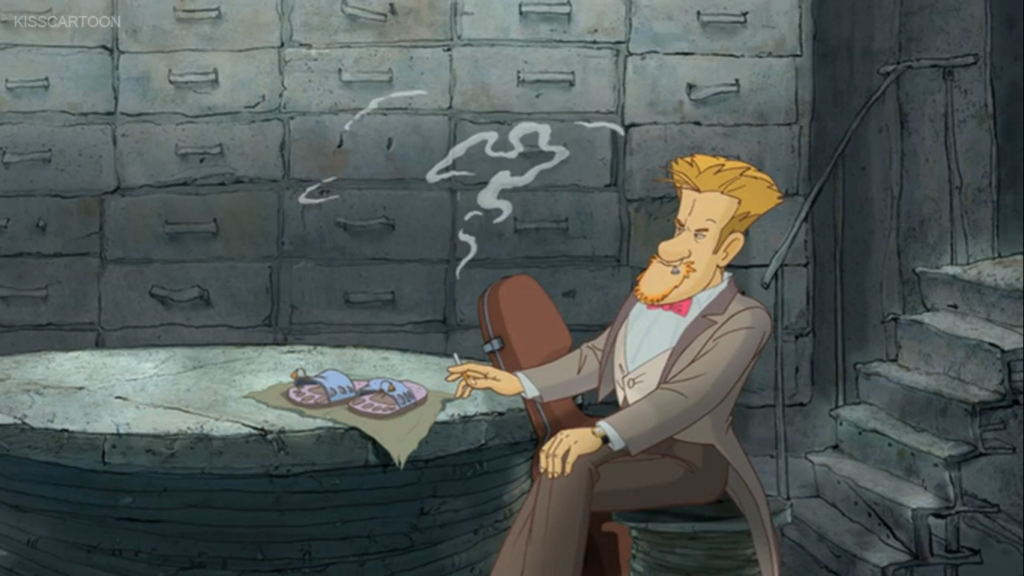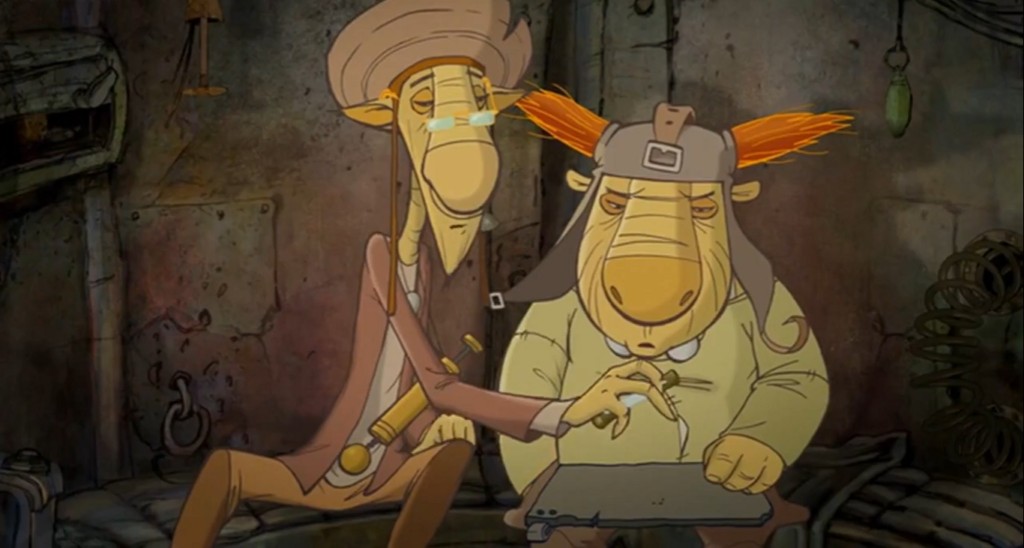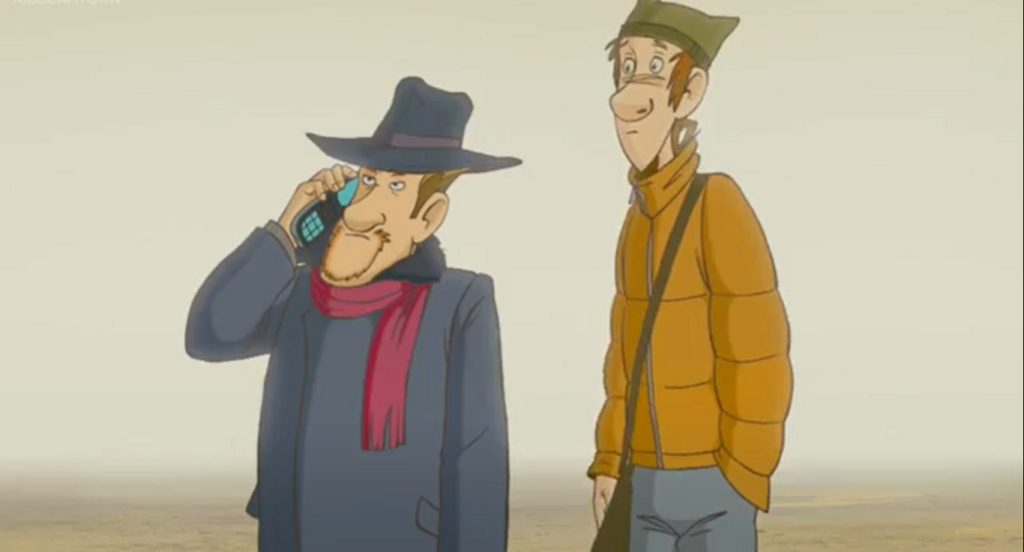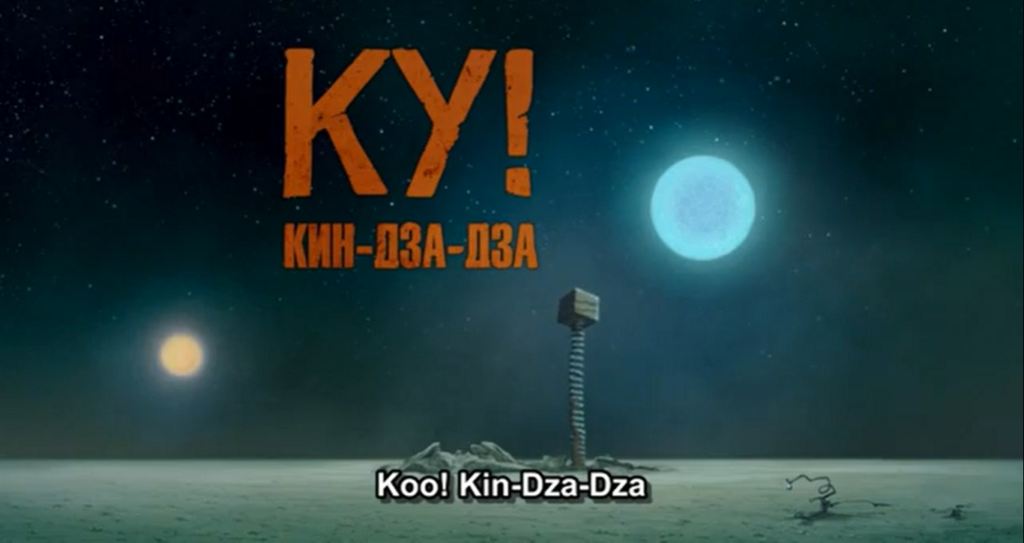-
#357 – The Lego Movie 2: The Second Part (2019)
The Lego Movie 2: The Second Part (2019)
Film review #357
Director: Mike Mitchell
SYNOPSIS: After Emmet Brickowski saved the world from Lord Business and the “Kragle”, strange creatures from the planet Duplo have begun attacking the Lego world. Five years on, the world is a post-apocalyptic wasteland thanks to the constant attacks, and only Emmet seems to have not let this change him. When strange aliens from the Systar system kidnap Emmet’s friends, he heads into space to go and save them, and along the way meets Rex Dangervest, a veteran warrior who shows Emmet how to toughen up to face the horrors of the Systar system…
THOUGHTS/ANALYSIS: The Lego Movie 2: The Second Part is a 2019 film and the sequel to the 2014 Lego Movie. The film starts right where the last one left off, with aliens from the planet “Duplo” have arrived in Bricksburg seemingly intent on destroying everything. Five years later, the constant attacks from these aliens has left the world in a post-apocalyptic state, as anything they try to build ends up being destroyed. In this new world, it seems all of the inhabitants and characters of the previous film have changed in order to adapt to this new world…all of them, that is, except Emmet, who is still his chirpy, optimistic, well-ordered self whose daily routine is seemingly unaffected by the chaos that is going on around him. Lucy attempts to toughen him up, but it seems to no avail. The opening scenes provide some good set-up, as well as establish some of the themes that the film will be exploring.The post-apocalyptic setting is obviously meant to parody Mad Max: Fury Road, and is a good place to show how characters have changed. I think the problem with this setting is that since Mad Max has such an iconic look and feel, as well as being an intense action film, it really is just too good to parody, and The Lego Movie 2 generally plays it as a straight parody without adding anything really special or creative, which is always going to render it underwhelming when comparing it to the source material.
When the aliens return again, they kidnap all of Emmet’s friends and take them to the Systar system for a wedding ceremony. Emmet is left by himself to build a spaceship and travel to the system to get his friends back. On the way, he is rescued by Rex Dangervest, an all-round action hero with a penchant for destruction and a spaceship crew comprised of dinosaurs. Rex teaches Emmet how to break – rather than build – things, and tries to get him to change and to stop being so soft. This again plays into the themes laid out at the start of the film, and explores them with a good amount of depth, while exploring the impact of this change on everyone and everything around him. Rex’s character arc initially starts him out as this heroic and super-cool action hero, but his character does develop some different dimensions as the film progresses as his methods and goals become increasingly more extreme than Emmet’s. His story however does feel a little muddled, and when his role switches near the end of the film it doesn’t feel like it has been built up enough and there’s not enough time for the viewer to adjust to everything that happens in the climax to make it feel very rewarding. The same goes with Queen Watevra Wa’Nabi and all the new characters who have their roles shifted at the end, meaning that you struggle to get re-attached to the characters after the film has been setting them up in one way for the majority of the film only to reverse them near the end. Nevertheless, these are only minor concerns, and the story makes a good effort to build (pun intended) on the first film’s rather simple, but effective storyline, and add in some complexities and new struggles for the characters, while still making it easy to follow.
The humour in this film, like the previous one, comes at the viewer thick and fast, and there’s definitely plenty of laughs to be had. Whereas the first one played with and poked fun of mediocrity and tropes, The Lego Movie 2 builds up some more complex jokes and uses the established characters to drive the humour from time to time. Some of the humour is really quite clever and unexpected. The film sometimes breaks the fourth wall for some of its jokes, and while this can be fine, I think the film does it a bit too much, and it ultimately distracts from the story. There’s also a lot more of the cutting away to the “real world” where a brother and sister are fighting for control of the toys and this is what is causing the conflict in the “Lego world”. It’s a clever link to the Lego mantra as being toys that are fuelled by imagination, but the constant switching back and forth, especially at the end, does some harm to the sense of peril the characters in the Lego world face when it’s constantly showing them as just playthings playing out a brother and sister feud. There’s also the inclusion of musical numbers, which I don’t think were really necessary.
Overall, The Lego Movie 2 develops on the themes of its predecessor by providing the established characters with new challenges to face and a new world that requires them to change. It maintains the themes it sets out at the start and uses the development of the characters and their reactions to explore them with plenty of depth. The story itself does get a bit lost around the middle, and the climax doesn’t have the huge impact it should for numerous reasons, but these negatives don’t massively harm the enjoyment of the film, and it is still entertaining; featuring familiar characters but completely new challenges for them. The Lego Movie provided something original and new, and while this sequel can’t replicate that novelty, it carves out something new which, despite some shortcomings, is still a good film with plenty of entertainment.
-
#356 – The Lego Movie (2014)
The Lego Movie (2014)
Film review #356
Director: Phil Lord, Christopher Miller
SYNOPSIS: Emmet Brickowski is an average guy leading his average life in the Lego city of Bricksburg. After finishing his job as a construction worker, he spots a strange young woman hanging around. After chasing her, he falls into a strange portal and wakes up with a strange piece stuck to his back. It turns out that it is the “piece of resistance” that is part of a prophecy that can stop the weapon known as the “Kragle”. Emmett is drawn out of his ordinary life and has to deal with the imaginative world beyond the instruction manuals he has up to now lived his life by in order to save the world…
THOUGHTS/ANALYSIS: The Lego Movie is a 2014 animated film based on the ubiquitous building blocks of the same name. Initial thoughts on what a Lego movie would be about throws up all sorts of issues: since Lego is essentially a medium for children’s imaginations to make any story they want and play however they want to, how can you make a film that encapsulates that while also adhering to the cinematic format by providing a coherent story, characters and setting?
The film starts off introducing Emmet Brickowski, a plain and ordinary construction worker who lives his life according to the instruction manuals. After his work for the day, he notices a woman hanging around a construction site, and goes to investigate. He ends up falling through a portal, and wakes up imprisoned with a mysterious piece attached to his back. The woman reappears and rescues Emmet, telling him that he is “the special”, a chosen one who with the “piece of resistance” that is attached to his back will save the world from the ultimate weapon known as the “Kragle”. The plot essentially revolves around stopping Lord Business from destroying the world with the Kragle, and it’s a fairly standard storyline involving a prophecy, the corporate villain, the unsuspecting hero, and so on. Emmet is a plain and ordinary character, but this plays to his strength in terms of the story, as his conformity and always following instructions to fit in has left him forgettable to everyone around him because there is nothing to him outside of those instructions. When he is introduced to a world beyond the borders of his step-by-step life, where the “master builders” are able to build anything just by using their imagination, Emmet finds himself completely out of place, and must learn how to use his own imagination. This story arc ends up turning the very plain Emmet into a well defined character who has his own place in the world, and its a rewarding development to watch.
Emmet’s dilemma really encapsulates the Lego mantra as a whole too: some people like to build by following the instructions, and some like to use their imaginations, but everyone should be able to play together. The Lego Moviereally is about Lego itself, and that is really quite clever. On top of that, it brings together a lot of the iconic sets, blocks and characters that Lego builders will recognise and just plays with them in a fun way. There is also the licensed characters from other franchises that make an appearance, and there is a lot of them. The film constantly throws these characters at the audience throughout the film, and offers some fun surprises and leaves you guessing just what will show up next. The most prominent of these characters is Batman, whose character is a cartoon-ish interpretation of him, and lends itself well to the unfamiliar setting. Other characters from DC comics, Star Wars, historical figures and Shaq himself also feature, and provide a cast that is so varied and unpredictable that it offsets the somewhat predictable details of the story. Even then, the film walks the fine line between telling a gripping story and parodying the familiar tropes to keep it humourous and entertaining. Given the diverse cast, there are a lot of small references that are easy to miss, but rewarding to find. The “Kragle” being named after “Krazy Glue” with some of the letters scratched off the side of the tube reminds me of a similar term in the film “Zardoz”, which would be an obscure reference to throw in there.
The film has the look and feel of a stop-motion movie made with actual Lego figures, but is, in fact, entirely computer animated. This is a homage to a popular movement of home movies that people made with Lego sets (often termed “brickfilms”), and really builds on that feel and takes it to another level. The whole film is fun and colourful, with some eye-popping visuals. This is best found in the film’s action scenes, which are fluid and filled with imaginative sequences. Some of these scenes can be hard to follow when there’s so much happening on screen, and it is difficult to know where to focus your attention, but it doesn’t ruin the overall enjoyment. The Lego Movie is an ambitious project that aims to capture the diverse and limitless possibilities of its franchise into a cinematic experience, and for the most part it succeeds: the story is a little simple, but it stays true to the Lego ethos, and augments it with a large cast of characters and settings that really open up the film to appeal to a wide audience (again, similar to the Lego ethos). The film is humourous, entertaining, and maintains a high level of energy all the way through. Maybe the fast pace and constant shifting of focus won’t appeal to some people as it does feel like a child playing with Lego and making up a story as they go along, but I think it always manages to provide something worthwhile without going too over-the-top, and exceeds expectations in almost every way.
-
#355 – Ku! Kin-dza-dza (2013)
Ku! Kin-dza-dza (2013)
Film review #355
Director: Georgy Danelia, Tatyana Ilyina
SYNOPSIS: A world-renowned cellist is on his way home when he is approached in the street by a young DJ claiming to be his nephew. The two see a strange looking fellow who wants to know “the number for their planet”, and when they press the button on the device in his hand, are instantly teleported to an alien world. The two of them must work together to find a way home, while also trying to navigate a dystopian society that very little sense to them…
THOUGHTS/ANALYSIS: Ku! Kin-dza-dza is a 2013 Georgian/Russian animated film, and a remake of the 1986 soviet film Kin-dza-dza. The original is a much loved film in it’s home countries, and is a very good dark comedy that also addresses issues of discrimination through its absurd setting. The story of the remake is very similar to the original: some of the scenes are practically identical, and for the most part, it captures the essence of the first film pretty well. Vladimir Chizhov and Tollik Tsarapkin are teleported to a distant alien planet after accidentally pressing the buttons on a device that a strange man was holding on the streets of Moscow. They find themselves on the planet Pluke, and encounter Bi and Wef, a pair of locals who try and swindle the two of them out of everything they have. The group forge an uneasy alliance as Uncle Vova (Vladimir) and Tollik try to find their way home, all the while trying to adapt and survive on this planet whose social structure is completely unlike anything they have ever encountered, such as social status being at least partially determined by the colour of one’s trousers. The film retains the story of the original, and so keeps most of the fun and satirical elements that made it so popular. In some parts the darker elements feel a bit lighter, as this remake is intended to be aimed at a more general audience.
One of the biggest changes is the names and occupations of the two main characters have been changed: Vladimir is now a world renowned cellist (in the original he could play the violin, but the instrument wasn’t his) instead of a foreman, and Tollik is a DJ. One of my main criticisms of this remake is that these small changes do end up ultimately harming the essence of what made the original successful. One of the key strengths of the original was the banality of the main characters and their mundane existence suddenly having to cope with the rules and social structure of an alien planet. In this version, having Vladimir be a famous violinist sets him up as having a backstory that disrupts this banality. There’s also a story about his ex-wife that is quietly built up in the background too, which again loads up the character with a bit too much baggage, rather than a blank slate that doesn’t bring as many complications into the story. Having Tollik be distantly related to Vladimir as well undoes the original’s premise of two men who just happen to be walking down the street at the same time and having never met each there before having to work together on an alien world is complicated through trying to develop these characters independently of the situation.
There are some changes, however, which add some good and interesting takes on the story. Being an animated film, there’s much more scope to be creative with the characters and design of the alien world. There is, of course, a risk of again disrupting the plainness of the original by being too over-the-top and fantastical, but to the film’s credit, in this respect it pulls it off quite well. Being set on an alien world, the characters are drawn with a more alien appearance, but they’re just alien enough without it being distracting. Other minor characters are more odd in appearance, but since they’re only on screen for a short time they don’t disrupt the tone of the film. Credit should be given to the film for achieving this balance. The animation in this film should also be commended: it is fluid and full of expression, and offers some detail and scenery that the original could not provide.
Overall, Ku! Kin-dza-dza is a faithful remake of the original, but ultimately doesn’t offer anything new or improve on what has gone before. The original was a sparse, small production, whereas this remake has a big budget and funding to appeal to a larger audience, and the changes that are made to accommodate this mostly end up affecting it a negative way. It’s not a bad film, because it sticks close to the original, and the original is very good: but when you’re remaking a film that was more or less perfect, you need to have a damn good reason to do so. Changing it to an animated film brings with it some benefits, but on the whole there just doesn’t feel like there’s enough substantial difference to justify the remake, and there’s no real reason to recommend it over the original.
-
#354 – 008: Operation Exterminate (1965)
Film review #354
Director: Umberto Lenzi
SYNOPSIS: Frank Smith, agent 006, is sent by the British secret service to Cairo to work with American agent MacDonald (or 008) in order to retrieve the plans for an anti-radar device that in the wrong hands would spell disaster for the world. 006 arrives to find that 008 is, to his surprise, a woman. The two must work together to unravel the mystery of the device and stop the perpetrators, while escaping evil henchman and cunning traps along the way…
THOUGHTS/ANALYSIS: 008: Operation Exterminate is a 1965 Italian spy film. As the title suggests it is heavily inspired by the 007 novels and films. The film’s story is fairly standard for a spy film, and involves agents 606 and 008′s mission to retrieve and destroy an anti-radar device, and to recover the plans. Along the way they end up facing off against various henchman, and fighting their way out of deadly traps, again very much as you’d expect. Based on the title you may expect the film to be a parody of the 007 franchise and spy films in general, but it is instead a straight and serious attempt at a spy film (as serious as these films can get anyway…). The story doesn’t really offer anything special, and it loses focus when it moves between all these different locations, which makes it difficult to keep track of why the agents are there and what they are supposed to be doing. Nevertheless, it’s not an uninteresting story, and there’s enough variety to keep it interesting.
Agent 006 is sent to Cairo to rendezvous with American agent 008, but when he gets there is surprised to find out that she is a woman. This is one of the more interesting aspects of the film, as MacDonald (agent 008) doesn’t play the typical female role in these films as a supporting, passive character, but rather she is on equal footing with the male agent, and I think she is more of the main character rather than him. She is a character that is formidable in her own right, and often takes the initiative in various situations. Having a strong female lead in such spy films of the time is practically unheard of, so the film offers something unique in this regard. Agent Smith (006) is a fairly standard Bond-esque character who doesn’t stand out too much in comparison to 008, which again gives her character more presence. The rest of the characters include a henchman that fires knives from a glove in typical and novel henchman style. The rest of the characters, including the main villain, don’t really have much impact on the film, and go by unnoticed. The development of the relationship between agents 606 and 008 really is the core of the film character-wise, and it is given plenty of time to develop and move beyond those first impressions to something more unique, which is one of the film’s strongest points.
The film takes full advantage of being set in Cairo, with some scenes taking place at iconic places such as the Pyramids of Giza and the Sphinx, which would have been great to see on film at the time. The film also offers some authentic glimpses of the city of Cairo as it is bustling with life, and this setting offers something a little different, while still playing into the use of exotic locales in spy films as one of the staples of the genre. The ending moving to the Swiss Alps comes a bit out of nowhere, and it is all over before we can appreciate this new location and get invested in what it has to offer. The twist at the end of the film also comes out of nowhere (which is why it makes a good twist), but doesn’t really impact much on the story, and the twist is reversed in the next scene a few minutes later, which makes it seem kinda pointless. It is quite satisfying to watch 008 be the only one who saw it coming and make plans in advance of it, and is a final testament to the strength of her character. Overall, 008: Operation Exterminate is a fairly standard spy film with all the typical setups and staples of the genre you would expect to find, however it doesn’t offer anything particularly unique to make it stand out. The strongest aspect of the film is the upending of the traditional roles of the male, heroic spy and the damsel in distress, by making it’s main character a woman and, for the most part, have her drive the story and be the hero. At the time it would have been something very unique, and in this respect it is interesting to watch how it is achieved. The film suffers from a story that loses its way sometimes, but offers enough of a twist on the genre to retain some interest.









































